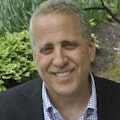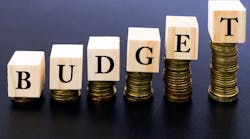It’s essential to create a budget for your dental practice
Mention budgets, goals, or knowing your numbers and most dentists’ eyes glaze over. I can’t tell you the number of colleagues and even friends of mine who say, “Yeah, it’s really important and I’m finally ready to create a budget and analyze my numbers … soon!”
Knowing your numbers and creating a realistic budget are key to any successful business, especially for a small fee-for-service (FFS) practice. Why is this? A strictly FFS practice has to make do with far fewer patients than any other practice model.
This can be a huge plus because it gives you more time for difficult procedures and to create authentic relationships with your patients. But it also means that you must be very intentional with your budgeting because it relates to fee schedules, payroll, and how many patients you need to see each day to be profitable.
An accurate budget has other benefits as well. One of the biggest is your peace of mind. I know firsthand the stress that comes from not knowing how much money you owe and whether you have enough money to cover the bills. There is the “what’s left over” form of paying bills versus having a budget derived from realistic goal setting. Knowing your numbers and what you need to produce to pay your bills and pay yourself is infinitely less stressful than operating in the dark. Trust me on that.
It is very difficult in a short article to fully describe the budgetary process, so I’ll provide the broad strokes to guide you in designing your own budget. If you’re starting a new practice, creating a new budget is sort of an exercise in magical thinking because you have no prior information for future calculations. If you’ve been in practice for a while and are finally ready to get serious about your numbers, this job is a little easier.
Where to start on your budget
Start with the previous year’s financial information. The ultimate goal is to account for every dollar that you collected and assign it a category so you can track exactly where the money went ... and I mean every dollar!
First create all the categories that are appropriate for your practice: payroll, rent, lab fees, insurance, office supplies, loans, credit card processing fees, uniforms, CE, etc. Don’t forget to have a category for take-home pay that reflects the personal budget you’ve already devised. (More on that later.)
Now, go through every check and credit card transaction your practice created for the year and assign the transaction amount to the appropriate category. Obviously, financial software such as QuickBooks helps with this, but it does not go line by line on credit card statements, so you’ll need to put the work in.
While I’m on the subject, don’t ask your accountant to do all this and send you a report. I’m a firm believer that the more you actually roll up your sleeves and do the detail work, the more invested you’ll be with its accuracy and more tuned in you’ll be with the financial health of your practice.
Once you’ve gone through the entire year’s transactions and assigned categories to all transactions, you should be able to add up all the categories and that total should roughly equal your yearly collection number. If it’s off, go back over your information to see what you missed. This is important because if the numbers don’t match, you’ll be working off faulty information and you won’t see the benefits of a working budget.
Once you have the information regarding where all the money went, you’re ready to project a budget for the upcoming year. Armed with the previous year’s categorized expenses, you can project this year’s expenses fairly accurately.
In doing so, consider any changes you’ll be making, such as raises for the staff, new equipment loans, and more. Take all the categories that you made, attach your projected expenses, and add them all up. You now have a projection for how much you’ll need to collect to pay your office expenses.
Handling personal expenses
To me, this is where it gets exciting. This is because you’ll be seeing how much you brought home last year and itemizing where every penny went: mortgage/rent, food, restaurants, health insurance, car expenses, vacation, 401(k)/IRA, taxes, and more. Same as you did with the office expenses, you’ll project the upcoming year’s expenses based on the previous year.
But here is where you get to dream a little. How many weeks of vacation do you want to take? How much do you need to put into retirement funding to get on the right path? What major purchases do you foresee for the year? Put all that into your personal budget for a total of your personal expenses. Add that to your office expenses and you now have the total number you need to collect for the coming year.
What to do with that number
The most accurate method is to figure out how many days you plan to work in the upcoming year; go month by month and see where your vacations and days off are and add up the total number of working days.
I used to average 175 working days a year and have since gotten it down to 150. Whatever your number is, divide that into your total collection number to come up with a daily goal of what your practice needs to produce/collect to stay on track and pay your bills.
I’ll stop here because I can feel my own eyes glazing over. For those of you who made it all the way to the end of this article, I will finish the budget process discussion in my article next month. I have to say that none of this is rocket science. It all makes sense and that’s why I like it, plus it works! Happy number crunching!
Editor's note: This article appeared in the July/August 2024 print edition of Dental Economics magazine. Dentists in North America are eligible for a complimentary print subscription. Sign up here.
About the Author

Robert S. Minch, DDS
Robert S. Minch, DDS, is a graduate of University of Maryland Dental School and has enjoyed a fee-for-service practice focusing on cosmetic and complete dentistry in Baltimore, Maryland, for 40 years. He is a visiting faculty member at Spear Education and teaches Dental GPR residents at Johns Hopkins Hospital. Additionally, he has created numerous study clubs. He can be reached at [email protected].


